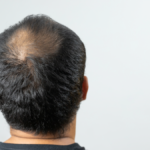Category: Skin | 2-Minute Read
Trauma…. I don’t just mean cuts, bruises, burns…… I mean irritation, itchiness and reactions.
What can cause this trauma?
To name a few:
1) Using hot water to wash your face or body.
2) Using a rough towel
3) Using a rough or large-beaded scrub
4) Using the wrong skincare products
5) Using too many active skincare products
6) Not using sunscreen
7) Using food products on your skin
8) Having skin treatments that are not suitable for your skin type
9) Hair removal techniques that are traumatic for your skin or lasers that are not suitable for your skin!
10) Dietary intolerances or a diet high in fat, sugar, or processed foods.
So how does Asian skin react when it is irritated, itchy and having a reaction?
Firstly, it goes red……. However, with our South-Asian complexion this redness is not as obvious as it would be in a Caucasian person. Therefore, most of the time it will not be seen as that much of a concern and is often dismissed.
Itchiness… this is seen as more of an irritating factor so we itch it….with our sharp fingernails, we scrape the top layer of our soft skin……
With constant itching and reactions to products or treatments, your skin will decide to protect itself….. how does it do this?
So if you scratch or tear your skin, your skin will try to repair itself fast….. That results in scar tissue. This is also the case if your skin is burnt or has a reaction but your skin will also produce more melanin or pigment so you may result in a pigmented scar.
If your skin is traumatised by UV radiation from the sun, your skin tries to protect itself from the sun by producing more melanin/pigment which has photo-protective properties however, it does not protect the skin entirely therefore you result in lentigines or sun-spots.
As a result of this, many in-clinic treatments may not be suitable for skin types IV-VI as the risk of hyperpigmentation is high!
Last but not least, Keloid scarring is more likely in skin types IV-VI and these are raised, pigmented scars that are very obvious and stubborn to treat.
So the next time you wash your face, choose a skincare product or opt for skin treatment, please ask yourself……is this going to traumatise my beautiful, ethnic skin? If you are not sure, please don’t take the risk and ask a medically-trained Asian Skin specialist!
As always,
Prioritise yourselves!

Someone Might Like This? Share It Now
Need Help?
Consult With Us
We are here to listen and understand your concerns. A detailed consultation will allow for a thorough assessment of what we can do to help you.























